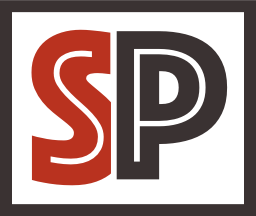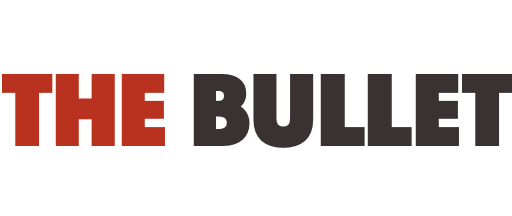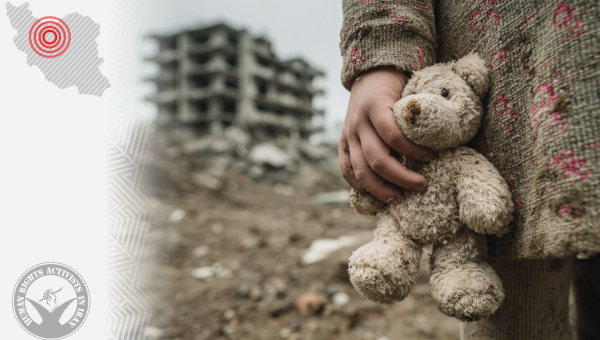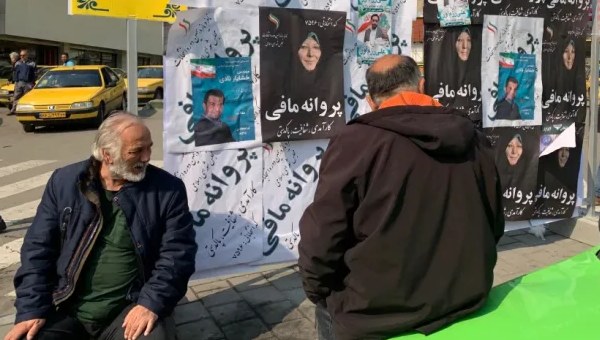The Islamic Republic of Iran, Anti-Imperialism, and the Left
The Islamic Republic of Iran (IRI) pursued an anti-US foreign policy, largely compelled by the anti-imperialist climate generated by the 1979 Revolution, while simultaneously supporting the Palestinian cause from an Islamist perspective. Since then, the Islamic Republic has posed a significant challenge for both the US and Israel.
The IRI emerged as a regional actor by forming the Axis of Resistance, beginning with the establishment of Hezbollah in Lebanon, followed by the rise of Hamas in Palestine, and by allying with Assad’s Syria. After the US invasions of Afghanistan and Iraq, Iran seemed to be encircled; however, it managed to penetrate Iraq through its ties with the Shia community. Later, during the Syrian civil war, it expanded its sphere of influence, empowered by Russian and Hezbollah support, by keeping Assad in power for an extended period. This era can be regarded as the peak point for the Axis of Resistance, even though it was under continuous assault by Takfiri jihadists.
However, after October 7, Israel’s war machine nearly neutralized Hamas and Hezbollah. Israel’s attacks severely weakened the Axis, creating a ground that jihadist forces exploited to overthrow Assad’s already exhausted regime in Syria. Eventually, Israel, with direct backing from the US, launched attacks on Iran itself, destroying much of its military and industrial infrastructure, thereby shifting the regional balance of power decisively in favor of the imperialists.
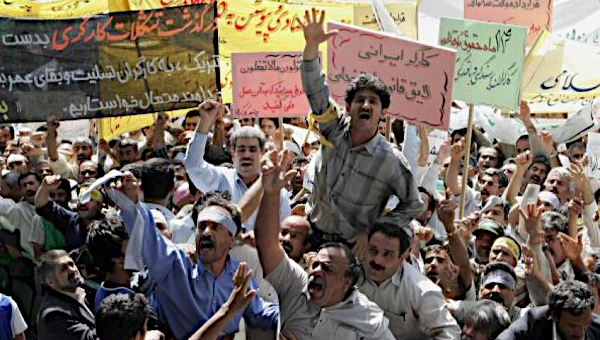
Internal Contradictions
It seems that the US and Israel also anticipated that their attack on Iran might spark a mass uprising by Iranians against the Islamic Republic. Such an uprising did not occur, yet the public did not rally behind the regime either. It should be emphasized that the large crowds at funerals and certain demonstrations organized by the Islamic Republic cannot be regarded as true public support.
Naturally, as this war unfolded, parties and organizations within the international socialist movement issued statements and declarations condemning the attacks. Roughly speaking, one segment of the socialist movement chose to side directly with Iran, with some even calling on the social opposition (particularly the working class and its organizations) to defend the Islamic Republic. Another segment, however, called for the defense of the Iranian people against imperialist aggression while simultaneously organizing an independent struggle against imperialism.
Like most Iranian socialists, I believe that an independent struggle must be organized against this imperialist attack on Iran. Various parties and organizations within the Iranian socialist movement have issued statements emphasizing the necessity of such a struggle. By saying this, I am not claiming that “Iranian socialists know best, and therefore international socialist movements should simply follow their chosen path out of internationalist solidarity.” Rather, to explain why this position represents the most common ground among Iranian socialists, I will try to bring out the true nature of the Islamic Republic.
Those who call on socialist and working-class forces to protect the Islamic Republic typically argue that Iran’s opposition to the US and Israel, despite the regime’s oppressive nature, carries a progressive dimension. I believe this view is rooted in a one-dimensional, purely anti-imperialist framework. It is important to emphasize that the Islamic Republic is not just another repressive state; it plays a distinctly reactionary role in both its internal dynamics and its external engagements. I aim to move beyond the antagonism between the Islamic Republic and the Iranian socialist movement and show that any characterization of Iran under the Islamic Republic, whether as an anti-imperialist power or even simply as a force capable of pushing back imperialism due to its geopolitical position, must account for its internal character. This character not only shapes the outcomes of regional conflicts, but also directly determines the fate of 90 million Iranians.
The Nature of the Islamic Republic
Before attempting to define the nature of the Islamic Republic of Iran as a state, I would like to briefly review how some prominent organizations within the Iranian socialist movement describe its structure. I will not refer to early post-revolutionary definitions, but instead focus on current characterizations. Let us begin with the oldest political party in Iran, the Tudeh Party of Iran. In 2014, on the 35th anniversary of the 1979 Revolution, the Tudeh Party published a statement broadly defining the Islamic Republic as a capitalist theocratic dictatorship. The Organization of the Fadaiyan (Minority) similarly defines the Islamic Republic as a capitalist religious dictatorship. In some of their May Day declarations and in statements issued during the Jina uprising, they also use the term “fascist Islamic Republic.” The Communist Party of Iran (Marxist-Leninist-Maoist) defines the regime as theocratic fascism. In their statements, they emphasize the Islamic Republic’s oppressive, religious, and exploitative character, highlighting its systematic use of violence. They also argue that Iran’s capitalist economic system is not anti-imperialist at all, and is also structurally dependent on the international imperialist system. The Communist Party of Iran, on the other hand, defines the Islamic Republic as a colonial, chauvinist, and capitalist state structure.
As these examples show, the Iranian socialist movement broadly defines the Islamic Republic as a capitalist state, while also underlining its theocratic, patriarchal, and repressive features. The term “fascist” is used by many of these organizations, though often in a broad sense, referring to the regime’s systematic use of violence and its reliance on religious, patriarchal, and nationalist ideologies, rather than to any strict classical definition of fascism.
I describe the Islamic Republic of Iran as a authoritarian capitalist state, governed jointly by the religious clergy and military forces. A significant portion of Iran’s economy is rooted in the oil and natural gas sector, which is managed by public institutions. However, this does not mean the economy is fully under state control. While some nationalizations following the 1979 Revolution created that impression, the privatization programs initiated in the 1990s reversed much of this. Most industrial enterprises and commercial institutions were either privatized outright or absorbed into quasi-state entities such as the Islamic Revolutionary Guard Corps (IRGC) and bonyads (foundations), which operate as de facto private enterprises. As a result, banks, factories, urban real estate, and rural agricultural land were redistributed among individuals, institutions, and foundations closely tied to the ruling elite. Even oil revenues were redirected to serve these power pillars of the Islamic Republic. This led to the emergence of a new bourgeoisie, which seized control of national resources. Once again, Iran’s wealth was concentrated in the hands of a tiny minority. This polarization of wealth and poverty did not only manifest itself at the individual level. It also divided Iran’s geographic and urban landscape. A few major cities became centers of wealth and resource accumulation, while vast regions of the country were left in deep poverty, deprived of the most basic rights and infrastructure.
The Islamic Republic is also a authoritarian regime. According to its own constitutional framework, the Supreme Leader is not elected through direct popular vote, but rather by an Assembly of Experts, a body composed of eighty-eight clerics approved by the regime itself. The judiciary is entirely controlled by a cleric appointed by the Supreme Leader, ensuring that judicial power remains fully subordinated to the highest authority. All candidates for elected office, whether in the legislative or executive branches, must first be approved by institutions directly or indirectly appointed by the Supreme Leader. Only after passing through this filter are they presented to the public in so-called elections. The media is wholly dominated either by the state or by factions and organizations loyal to the regime. The activities of independent political parties, civil society organizations, or labor unions not sanctioned by the Islamic Republic are strictly prohibited. The independent groups that do emerge are subjected to constant repression and arrests or are simply eliminated from the public sphere. In short, all centers of power in Iran, judicial, legislative, executive, military, cultural, and economic, are concentrated in the hands of the Supreme Leader and the sprawling web of institutions built around his authority.
The Islamic Republic of Iran is also a theocratic regime, a political system in which religion and state are fully integrated. According to the Constitution of the Islamic Republic, Twelver Shi’a Islam is the official state religion, and all laws are drafted in accordance with Islam. The legal system operates under the interpretations of Shia clerics, whose authority supersedes both elected bodies and popular will. This theocratic framework legally and politically divides people into unequal categories based on gender, religious identity, and belief systems. Rights and freedoms are recognized only to the extent that they do not conflict with Islamic principles. In effect, the Constitution transforms religion from a private matter into a tool of state control. Moreover, all organs of the state are mobilized to reinforce this religious ideology. The media, the education system, and the production of so-called cultural goods are all instrumentalized to impose and propagate the regime’s religious worldview within the society.
In addition to its other defining features, the Islamic Republic of Iran maintains its rule through the military power of the Islamic Revolutionary Guard Corps (IRGC), which serves as its primary instrument for suppressing social opposition and preserving the regime. As previously mentioned, individuals and communities in Iran are subject to systematic discrimination based on gender, ethnicity, and religious identity. Every year, hundreds of people are executed, some for political reasons, and many simply for being members of non-Persian or non-Shia communities, particularly Kurds, Arabs, and Baloch people. Workers are denied even the most basic rights, such as the right to organize or form independent unions. Efforts to secure better working conditions or wages are met with severe and brutal repression. The IRGC stands at the center of this machinery of repression and exploitation, not only enforcing the regime’s domestic order but also serving as its key actor in regional conflicts.
Given the IRGC’s foundational role in both the establishment and endurance of the Islamic Republic, its deep influence on domestic and foreign policy, and its prominent position in the regime’s confrontation with the United States, it becomes essential to understand this military institution in order to clarify our political stance. For this reason, I will now explore in more detail how the IRGC emerged and evolved into the central pillar of the Islamic Republic’s military and political power.
IRGC’s Place Within the Islamic Republic Structure
The IRGC was established immediately after the 1979 Revolution with the aim of consolidating religious dictatorship and eliminating leftist and democratic forces. As its legal duty is to protect the authority of the Supreme Leader and safeguard the so-called “Islamic Revolution,” the IRGC is empowered to exercise its full authority without constraint.
Today, its armed wing is composed of land, aerospace, naval, and Quds Forces. The latter, responsible for cross-border and extraterritorial operations, has gained increasing prominence over the past two decades. However, the IRGC is far more than a conventional military organization. It also functions as a security apparatus, an intelligence agency, a mechanism of social control and repression, a cultural institution, and a major financial and industrial conglomerate. Its reach extends deeply into every aspect of Iranian life, making it one of the most powerful and pervasive institutions within the Islamic Republic.
In addition to its formal armed forces, the IRGC maintains a paramilitary branch known as the Basij, which coordinates a volunteer militia. Typically organized through mosques and composed of civilian recruits, the Basij is deployed to suppress anti-regime activities and enforce social control. It also plays a key role in managing the IRGC’s cultural initiatives targeting youth, reinforcing ideological indoctrination.
The IRGC operates its own intelligence agency, functioning independently and often in parallel with the official Ministry of Intelligence. This agency is employed to abduct, silence, and, in some cases, eliminate political dissidents. In the sphere of media and propaganda, the IRGC controls influential news agencies such as Fars and Tasnim, and produces documentaries and television series aimed at shaping public opinion and distorting reality to serve regime interests.
Economically, the IRGC functions as an unmatched conglomerate in key sectors such as construction, energy, industry, telecommunications, banking, and finance. It is believed to be the largest employer in Iran’s private sector, with around 150,000 employees across more than 800 registered companies. Beyond its legal economic enterprises, the IRGC also dominates Iran’s black market, controlling the illegal trade in electronics, alcohol, beverages, cigarettes, and similar goods. Its control over the coasts, ports, and docks of the Persian Gulf and the Sea of Oman, through which most of Iran’s imports and exports pass, ensures that no major trade can occur without IRGC oversight. The financial transactions for this illicit commerce are managed through banks and financial institutions under the IRGC’s ownership, further reinforcing its dominance over Iran’s economy.
It is impossible for an organization like the IRGC, with such extensive influence across multiple sectors of society, not to intervene in politics to protect its own interests. However, unlike a conventional military force, it does not rely solely on the threat of armed coups. Instead, it exercises its political influence through a combination of military strength and vast economic power, shaping both domestic and foreign policy. While formally embedded within the state, the IRGC operates as an independent and parallel structure. Given its entrenched position, no authority within the system is capable of restraining or holding it accountable.
The Islamic Republic and Anti-Imperialism
The very nature of the Islamic Republic, and the IRGC that protects it, can itself indicate how we should position ourselves in international conflicts. What makes this positioning confusing is the fact that the Islamic Republic has long conflicted with imperialist powers and their regional allies. However, the essence of this conflict is far from progressive. It’s not that the Islamic Republic began as anti-imperialist during the 1979 Revolution and later deviated from that path. In reality, imperialist powers, especially the United States, saw the Islamist movement as a useful tool to suppress revolutionary forces and contain Soviet influence. Before returning to Iran, Khomeini communicated with US officials to prevent a military coup against the Islamic movement. Yet, pressure from revolutionary organizations and the masses pushed the Islamic Republic into adopting an anti-US stance. Then, after massacring the revolutionaries and erasing them from Iran’s political landscape, the regime monopolized anti-imperialist rhetoric for itself. Thus, Iran’s regional interests began to clash with the strategic goals of the US and its allies. In an attempt to manage this contradiction, the Islamic Republic has struggled to end the conflicts, while also becoming dependent on superpowers like Russia and China.
On the other hand, despite enduring various sanctions since the 1980s, Iran’s economy has remained deeply entangled with global capitalist markets and institutions. These economic ties inherently require compliance with the political and economic order controlled by imperialist powers. For instance, although the regime presents itself as an independent actor on the world stage, it has implemented policies aligned with International Monetary Fund (IMF) recommendations. The privatization campaigns launched in the early 1990s were initiated under IMF guidance, including the removal of subsidies on basic goods and necessities. Iran has also consistently pursued dialogue and negotiations with imperialist powers over its nuclear program. However, internal power dynamics within the Islamic Republic often obstruct such negotiations, preventing any lasting resolution to these international conflicts.
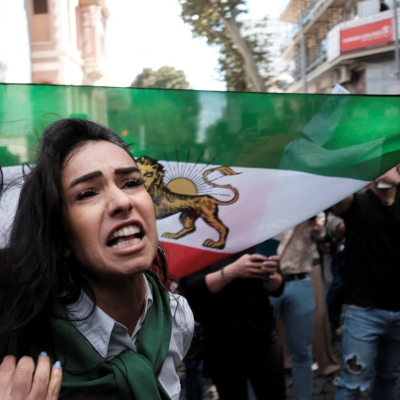
Individuals and groups surrounding the Supreme Leader have organized themselves within various structures to safeguard their own interests, forming a wide political spectrum that goes beyond the simplistic division between principlists and reformists. I want to highlight just three distinct factions within this broad landscape.
First, the clergy (commonly referred to as mullahs), who are embedded within the Islamic Republic and benefit directly from its religious framework, oversee a highly functional system of exploitation. This system operates through the judiciary, religious foundations, religious schools, and official religious institutions. Foundations are the channels through which financial resources flow, and the political power wielded by other entities ensures the bureaucratic operation of this financial flow. Any significant international transformation could disrupt or weaken this apparatus.
Second, the IRGC derives its political and economic power largely from the ongoing conflict between Iran and the United States. Over the past two decades, the IRGC’s Quds Force has become Iran’s most prominent foreign policy instrument. Far from occupying a progressive position, the IRGC is deeply involved in regional politics and military conflicts to preserve its own political dominance and economic exploitation system. It may, at times, soften its hardline stance to protect its interests, but doing so would likely require a significant reshaping of Iran’s internal political landscape.
Third, there is a faction, less powerful and less influential at times, that also operates within the Islamic Republic. This group traces Iran’s internal contradictions to its foreign policy stance. It attributes the country’s fragile economy, despite its vast energy resources, the widespread economic hardship experienced by a large portion of the population, and the resulting popular unrest to the regime’s confrontational foreign policy. This faction views normalization with imperialist powers as the solution. It presents the current crisis as the result of external conflict, rather than the product of decades of looting, corruption, and mismanagement by those rooted inside the rotten and reactionary structure of the Islamic Republic.
Third Path Debates
A large segment of the Iranian socialist movement regards the Islamic Republic not only as an oppressive regime but also as a reactionary extension of the capitalist order. For this reason, they do not view the conflict between Iran and the US or Israel as inherently progressive. Of course, Iran and the US or Israel are not equal in terms of their reactionary character, nor should they be treated as such. However, the fact that one is more reactionary does not automatically make the other progressive. While confronting imperialism is strategically significant, it does not necessarily lead to progressive outcomes or the weakening of imperialist hegemony. We witnessed this firsthand in Afghanistan.
Sometimes in physics, a complex, multidimensional equation with multiple unknowns describing a system is simplified into a set of one-dimensional equations with a single unknown, using various assumptions. While this can make the problem easier to solve, such a solution often results from numerous approximations and eventually might fail to capture the true behavior of the system, leading to inaccurate predictions. I believe we often interpret the conflict between Iran and the US-Israel similarly. Because we desire the pushing back of imperialism as the solution, we ignore nearly everything else in the equation before us. We reduce the situation to a simple, one-dimensional problem and define our position accordingly. But what exactly are we ignoring in this equation? Besides the fact that the Islamic Republic had a significant role in transforming the Middle East into a permanent state of reactionary wars in the region, I want to point out another thing: we overlook the fate of 90 million people by effectively entrusting it to a reactionary regime. This is not about their “human rights” or IRI being an oppressive state; rather, we imply that they cannot determine their own destiny. The consequence is that people lose hope, and they start assuming that freedom is only achievable through external intervention. In doing so, we impose the will of imperialism on those very people beyond our will.
The recent defense of the Islamic Republic by segments of the socialist movement is not a tactical stance, but a strategic orientation for many parties and organizations. So much so that even when the working class rises up against unemployment and poverty, or when the Iranian people mobilize for their basic democratic rights, these socialists interpret such revolts as foreign conspiracies orchestrated by the US or Israel. While one might understand the instinct to defend Iran, under imperialist assault, as a short-term tactical posture, the outright denial of any possibility for independent struggle reveals something deeper. To link working-class uprisings against a deeply exploitative and repressive system with imperialist plots is not just a political error; it signals a fundamental ideological impasse.
We are talking about a people who once rose up and expelled the United States from their homeland. It was not the Islamic Republic, but the Iranian people themselves who truly pushed the US back. However, when their revolution was hijacked and their years-long struggles for resurgence were brutally suppressed by the Islamic Republic, they became exhausted and resigned to their fate. Yet even in this exhausted state, they have managed to shake the foundations of the Islamic Republic with at least three major uprisings in the past decade. Two of these were the raging rebellions of the poor, unable to feed themselves; the other was a furious uprising led by women, sparked by killings over compulsory hijab laws.
By speaking of exhaustion, I am not promoting pessimism. I argue instead that progressive forces must organize an independent struggle to end this oppression and transform the situation. If the social opposition today does not choose a path of resistance independent from the Islamic Republic, what other path can it carve out for itself? Do we consider the 1979 Revolution a finished chapter? Will there be no more progressive phase of that revolution in Iran? And if there is, can it possibly be realized by aligning with the IRGC? Unless one belongs to the so-called resistance-axis left, which, in most cases, is funded by the Islamic Republic, this question should not even be up for debate. For an Iranian socialist, the duty is to cling to that faint light of survival, however dimly it may flicker between life and death.
Today, although Iran is under imperialist attack, the Islamic Republic lacks broad public support because genuine anti-imperialist forces have been eliminated, and anti-imperialist sentiment has been erased from everyday life. As a result, any genuine anti-imperialist struggle in the region depends on the Islamic Republic being overthrown by domestic social opposition. This situation compels the Iranian socialist movement, at least on a theoretical level, to organize an independent struggle within Iran. Of course, it is debatable whether a socialist movement that is repressed and organizationally weak has the practical capacity to wage an independent anti-imperialist struggle. But the absence of such a possibility does not negate its necessity. •
